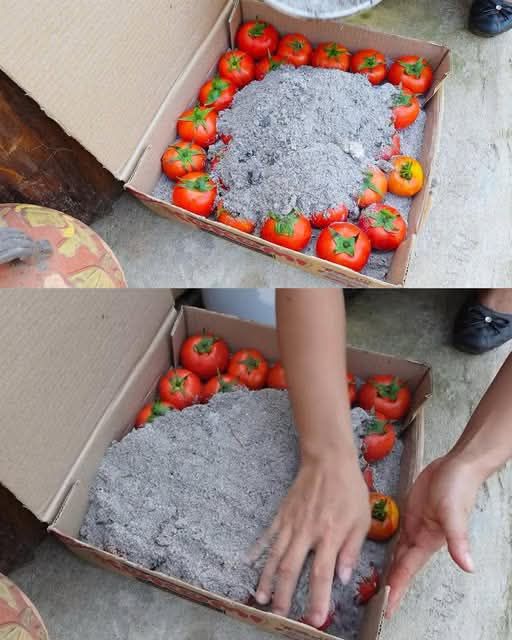ADVERTISEMENT
Preserving Tomatoes in Ash: A Traditional Technique for Longer Freshness
When it comes to preserving tomatoes, there are countless methods available, from canning and freezing to drying. However, one traditional technique that has stood the test of time is preserving tomatoes in ash. This age-old method, often overlooked in the modern age of refrigeration, offers a unique and natural way to extend the freshness of tomatoes while also enhancing their flavor. Whether you have a bumper crop of tomatoes or simply want to try something new, preserving tomatoes in ash is a fascinating technique worth exploring.
What is the Ash Preservation Method?
Preserving food in ash is a technique that dates back to ancient times, where it was used for a variety of fruits and vegetables. Ashes, particularly from wood or certain plant sources, contain alkaline properties that help to preserve the integrity of produce by preventing the growth of bacteria and mold. This method works particularly well for tomatoes, which are perishable and often require careful handling to avoid spoilage.
The idea behind preserving tomatoes in ash is simple: the tomatoes are stored in a bed of ash, which absorbs excess moisture, creates a barrier to pests, and helps to control the temperature and humidity around the fruit, allowing it to remain fresh for weeks or even months.
Why Use Ash for Preserving Tomatoes?
Ash, particularly from hardwoods like oak, beech, or ash trees, has a unique ability to preserve food. Here are some of the key reasons why this method works so effectively for tomatoes:
- Moisture Control: Tomatoes release moisture over time, and moisture is a leading cause of spoilage. Ash acts as a natural desiccant, drawing out excess moisture and preventing the tomatoes from rotting or becoming moldy.
- Natural Antimicrobial Properties: Ash has natural alkaline and antimicrobial properties that help prevent the growth of bacteria and fungi, which can lead to decay. This makes it an ideal environment for storing tomatoes.
- Temperature Regulation: Ash helps to keep tomatoes cool and at a consistent temperature, which is essential for long-term preservation. It prevents the tomatoes from being exposed to the extreme temperature fluctuations that can occur in a typical kitchen or pantry.
- Flavor Enhancement: Many people find that tomatoes preserved in ash have a deeper, more concentrated flavor, which can make them perfect for use in sauces, soups, and stews.
How to Preserve Tomatoes in Ash: A Step-by-Step Guide
If you’re ready to try preserving your tomatoes the traditional way, follow these simple steps to ensure the best results:
What You’ll Need:
- Fresh, ripe tomatoes (choose firm, undamaged tomatoes for the best results)
- Ash from hardwood (oak, beech, or ash are ideal)
- A container or box for storing the tomatoes (a wooden crate, cardboard box, or large ceramic jar works well)
- A cool, dark storage area (such as a cellar or cool pantry)
Step 1: Prepare the Ash
Start by collecting ash from a wood-burning stove or fireplace, ensuring that the ash is completely cool before use. You want to avoid any live embers, as they could damage the tomatoes. Sift the ash through a fine mesh strainer to remove any larger pieces of charcoal or debris. You should end up with a fine, powdery ash.
Step 2: Prepare the Tomatoes
Before placing the tomatoes in the ash, gently wash them to remove any dirt or pesticide residue. Be sure to dry them thoroughly using a soft cloth or paper towels to remove all excess moisture. It’s important that the tomatoes are dry before being stored, as moisture can lead to mold growth.
Step 3: Layer the Ash and Tomatoes
In your chosen container, begin by creating a layer of ash at the bottom. Then, carefully place the tomatoes on top, making sure they are not touching one another. Layer them with more ash, covering the tomatoes completely. Repeat this layering process until all the tomatoes are stored and completely surrounded by ash.
If you’re using a wooden crate or box, ensure that the tomatoes are in a single layer to allow for even preservation. It’s important not to stack them too high, as
